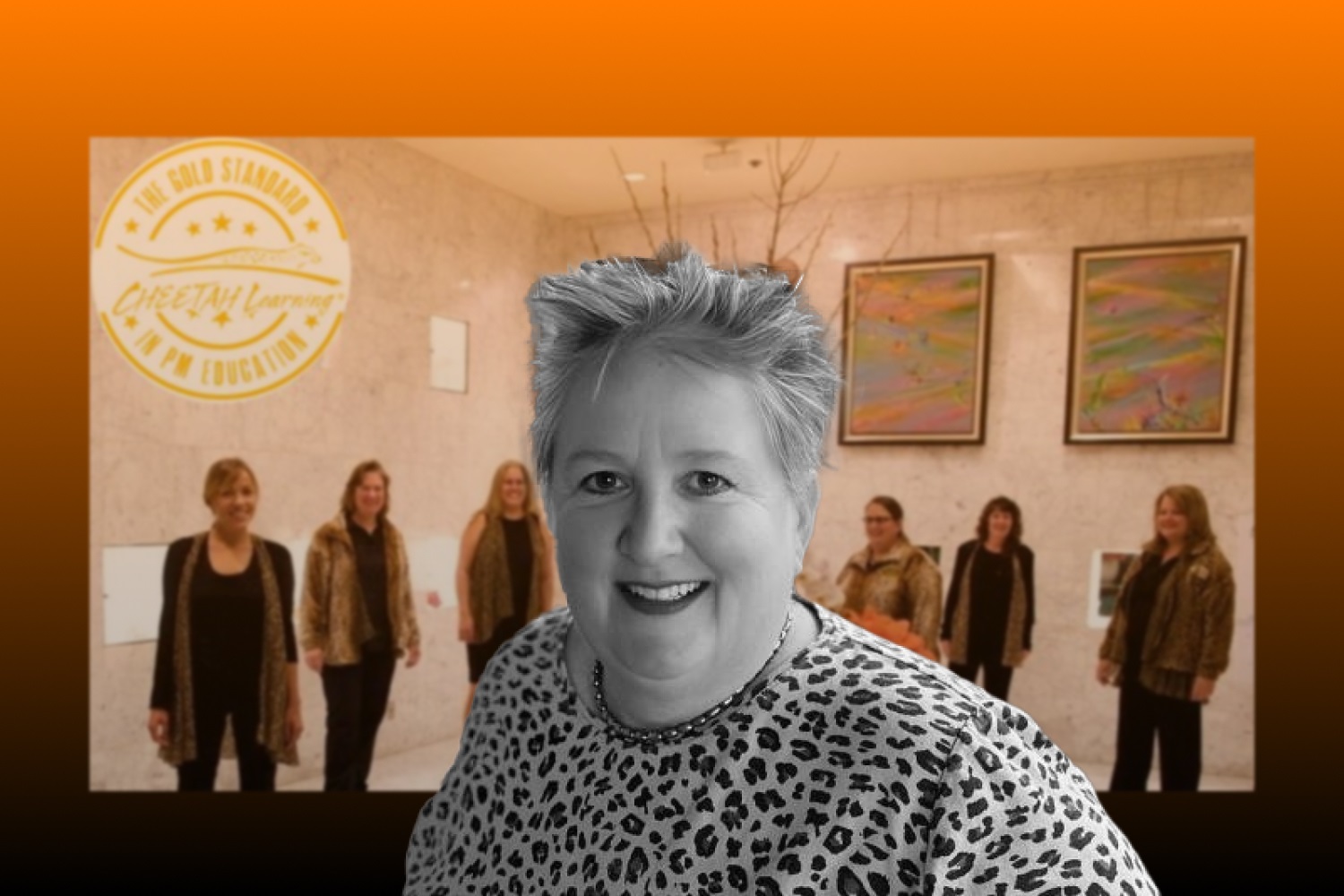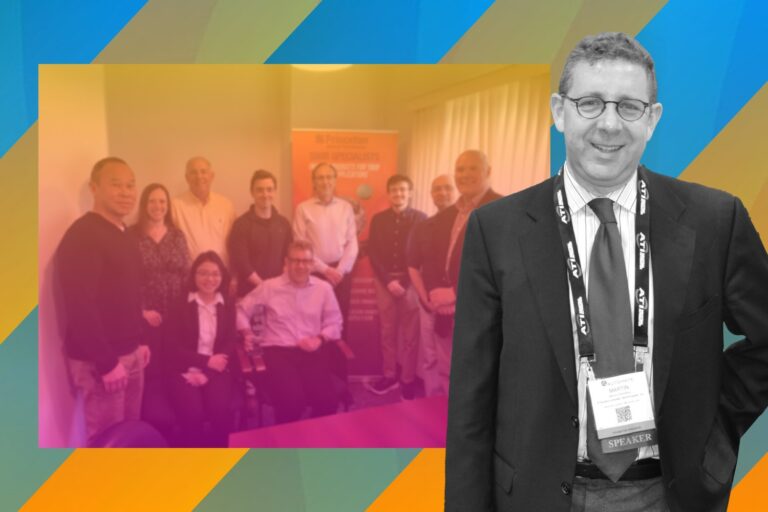Michelle’s Chutzpah: Improve Businesses Bottom Line and Profitability
Armed with degrees in Aerospace Engineering from Syracuse University and Mechanical Engineering from the University of Dayton, Michelle LaBrosse- founder and CEO of Cheetah Learning – began her journey in the United States Air Force (USAF), navigating the intricacies of flight and spacecraft design.
However, her narrative takes an unexpected turn as she boldly steps into entrepreneurship at the age of 25, not only defying conventions but drawing retired General officers into her entrepreneurial orbit.
Michelle LaBrosse’s journey into the aerospace world was fueled by a childhood shaped by the space program.
Launching Dreams: Michelle LaBrosse’s Early Years and Aerospace Aspirations
Growing up in the vicinity of Pratt and Whitney, with classes at the aerospace giant during high school, Michelle’s fascination with aerospace engineering was inevitable.
“What does a 17- and 18-year-old know about the difference between aerospace and mechanical engineering? It’s not much, right? So, I wanted to go to aerospace, and I didn’t want to go that far from home. I could have gone. ” Michelle said.
Despite considering other prominent aerospace schools like the University of Washington in Seattle, Michelle’s path diverged as she chose Syracuse University, driven by an Air Force scholarship and a desire to stay close to home.
Excelling in her academic pursuits, Michelle graduated at the top of her class, earning the distinction of being a distinguished graduate with the Air Force.
Michelle stated: “Syracuse was a great fit for me. And I graduated top of my class. I was the class marshal and I graduated with this. I was a distinguished graduate with the Air Force, and I got a regular commission when I got out.”
Embarking on her active duty as a regular Air Force officer, a noteworthy achievement for an ROTC graduate, Michelle found herself stationed at Wright-Patterson Air Force Base, a hub of aerospace activity.
Surrounded by a sea of generals, colonels, and fellow lieutenants, Michelle embraced the challenges of aerospace engineering, starting in an aircraft structures office.
Her early projects, including upgrading bomb systems on F-15s as part of the Seek Eagle programs, provided her with hands-on experience in ensuring the structural integrity of aircraft.
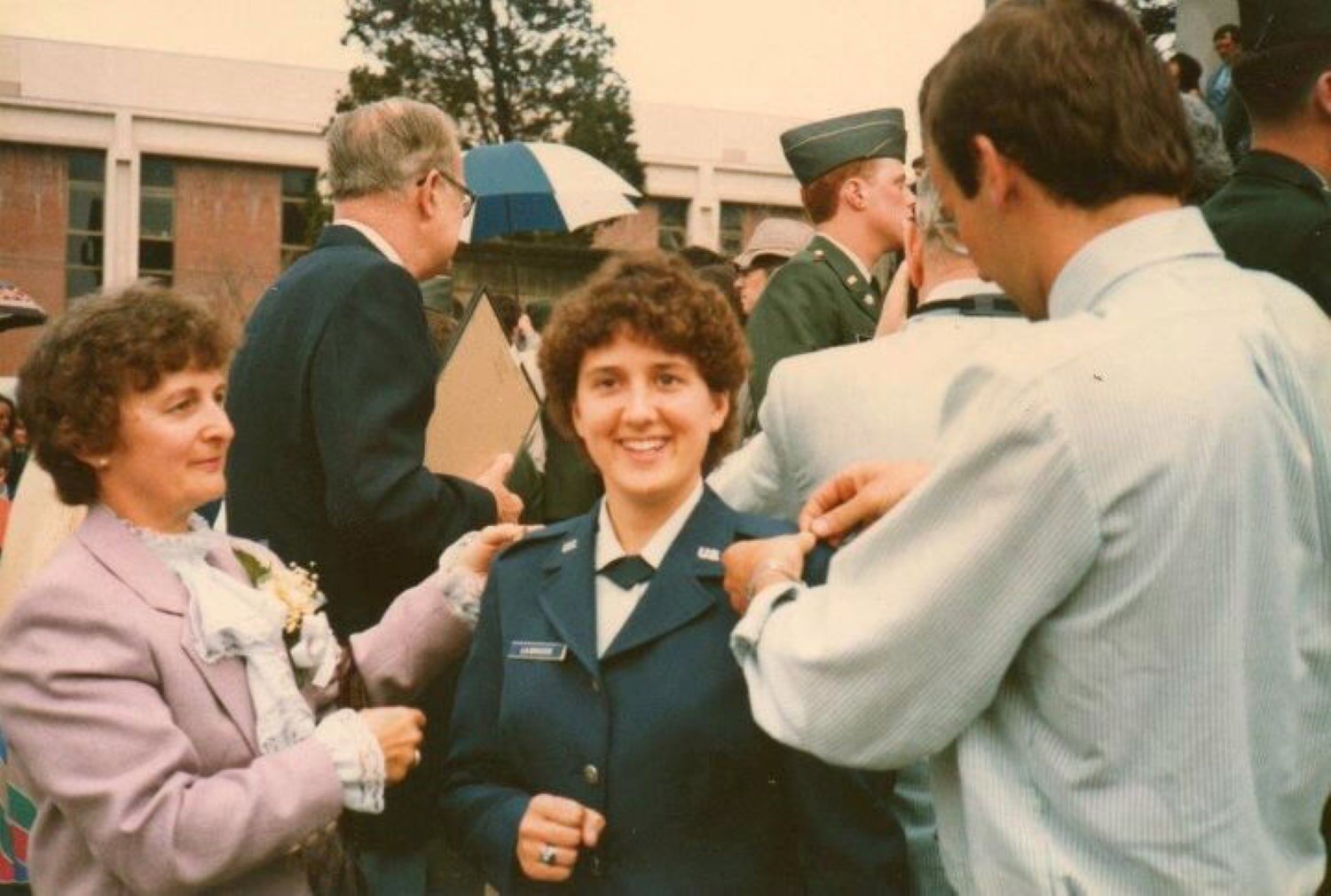
Michelle pursued further education, earning her master’s degree in mechanical engineering from the University of Dayton, an experience akin to a college reunion with her classmates from Syracuse.
However, her career took an unexpected turn when she transitioned to an electronic warfare office, diving into the realm of electronic reliability at just 24 years old.
In this role, Michelle found herself working with various electronic defense contractors, reviewing engineering proposals and gaining insights into the intricate world of DOD contracting.
Notably, Michelle witnessed a significant shift in the air force’s approach, transitioning from dictating procedures to specifying requirements.
At the age of 25, Michelle LaBrosse found herself rewriting the rules, quite literally, as she authored new testing standards for electronics in the United States Air Force.
Her expertise in the mechanical engineering aspect of testing procedures set her apart, and upon leaving the Air Force, she transformed this skill into a thriving business.
Specializing in writing test standards and procedures for electronic and aerospace companies, Michelle quickly garnered clients ranging from major aerospace corporations to leading car manufacturers.
Over five years, she built a successful business, working closely with government contractors and earning a reputation for her rigorous engineering analyses.
Not content with resting on her laurels, Michelle expanded her entrepreneurial endeavors by offering a training class titled “Avionics Integrity.”
However, Michelle’s entrepreneurial journey wasn’t without its challenges. Recognizing the need to evolve, she began writing proposals that went beyond simple probabilistic analyses.
Her focus shifted towards demonstrating the integrity of solder and design processes, even aiding companies in setting up their test labs.
Pioneering Accelerated Learning to Lead Cheetah’s Triumph
In 1995, driven by an unwavering commitment to effective teaching and armed with a background in instructing defense contractors on avionics integrity, Michelle LaBrosse entered a new chapter of her professional journey.
Eager to enhance her teaching skills, she immersed herself in the realm of accelerated learning, becoming an active participant in groups focused on this innovative approach.
Her engagement with the American Society for Training and Development (ASTD) marked a pivotal moment, aligning her passion for teaching with a burgeoning interest in the dynamics of accelerated learning.
Not merely content with theoretical exploration, Michelle’s educational pursuits extended to practical applications. Her enrollment in educational psychology classes and courses on designing accelerated learning curricula reflected a deep commitment to refining her instructional methods.
“My parents were both teachers. I think it’s part of my DNA, then I took some educational psychology classes, and I took classes on designing accelerated learning curriculum and got really into that.” – she stated.
The year 1995 witnessed Michelle’s audacious leap into the then-nascent field of online education. Fueled by a vision to democratize knowledge, she created “Wired for Success,” an online platform offering business development courses.
Despite the technological limitations of the time, Michelle managed to collaborate with 300 colleges, delivering her accelerated learning system to eager learners.
“I really wanted to create a whole bunch of online curriculums, which, then we’re talking 1995. I had 300 colleges selling my online courses and they were all business development type courses using this accelerated learning system I created for online learning.
Yet, the entrepreneurial path is seldom a linear trajectory, and Michelle encountered the challenges that often accompany pioneering efforts. “Wired for Success” faced headwinds and did not achieve the anticipated success.
“I didn’t have anybody registering. So that was my first, that was my first business. I tanked.“ – she said.
Besides, in the aftermath of the collapse of her initial venture, “Wired for Success,” Michelle LaBrosse confronted a series of personal and professional setbacks – a divorce, the loss of her house, and the weight of business failure, all transpiring around the age of 33 or 34.
Unfazed by adversity, at approximately 35, she opted for a significant career shift, assuming the role of a research scientist in systems engineering at the Pratt and Whitney Engineering Research Company.
Returning to her roots and living near her parents marked a pivotal moment for Michelle. Amidst 150 engineers and scientists posing as project managers, each advocating 250 distinct project management methods, Michelle’s adept facilitation skills from her government contracting business emerged as a beacon of hope.
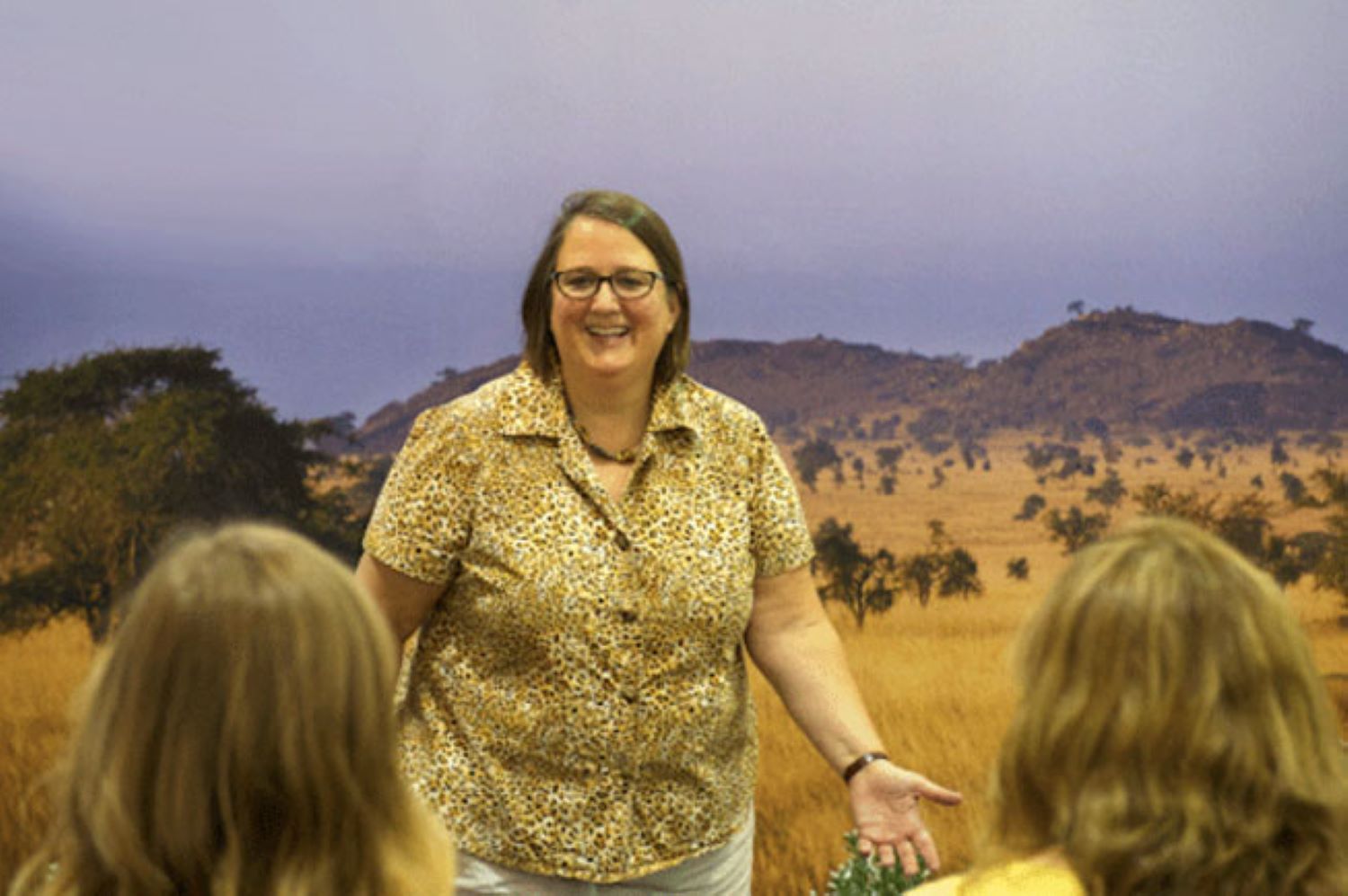
Assigned the task of facilitating disaster recovery project, Michelle rejuvenated projects that had hit insurmountable roadblocks.
Recognizing the urgent need for effective project management training, she proposed a one-day project management class. However, her proposal encountered skepticism from those invested in the conventional five-day approach.
Unperturbed, Michelle exposed the inefficiencies of the existing system. The department’s dissolution became inevitable, retaining only Michelle reporting directly to the chief operating officer.
In an unexpected turn, the company’s leadership expressed pride in Michelle’s achievements but acknowledged the primary focus on research. Michelle confronted a critical decision — return to her roots as a research scientist or brave the uncertainties of entrepreneurship once again.
Despite inherent risks and the recent failure of her first business, Michelle’s entrepreneurial spirit prevailed. Encouraged by her brother’s support and buoyed by her family’s tight-knit bond, she chose to embark on a new venture.
This marked the genesis of Cheetah, a venture poised to redefine project management education. The Cheetah engine stands as a powerful force in accelerated learning, project management mastery, negotiation finesse, and leadership excellence.
Rooted in a distinctive formula, this engine propels individuals towards achieving their goals at least 5x faster while extracting the best from every participant. The formula’s core elements—Accelerated Learning, Experienced PMP Coaches, a Time-Tested Approach, and a Passing Guarantee—collaborate harmoniously to create an unparalleled educational experience.
Accelerated Learning forms the bedrock of the Cheetah engine. By guiding individuals to understand and leverage their innate strengths, the program enables them to swiftly grasp information, honing their skills in record time. This personalized learning approach empowers participants to navigate their unique paths to success with efficiency and joy.
At the helm of the Cheetah engine are seasoned Project Management Professional (PMP) Coaches. These mentors bring a wealth of real-world experience, offering personalized guidance and insights. Their expertise transforms theoretical knowledge into practical, actionable skills, ensuring participants are not only well-versed in concepts but also adept at their application in real-world scenarios.
The Time-Tested Approach ensures that the Cheetah engine isn’t just a flash in the pan. Drawing from proven methodologies and best practices, the program establishes a solid foundation for participants.
A Strategic Trailblazer in Sales and Relationship Building
Michelle LaBrosse emphasizes the critical importance of mastering the art of sales for new business owners.
She underscores the need to confront and overcome discomfort in various aspects of business, particularly in sales: “No matter if you, whatever you’re uncomfortable with, you got to lean into it. And I am. Perpetually working on sales.”
Michelle has taken proactive steps to enhance her sales skills.
“Now I just hired a new sales team. They were doing great, and I learned a lot from them and I’m running like crazy to support them.”
She added: “Sales is the number one and like contract academy, I’m sure it’s going to teach you how to get business, but learning how to get business, learning how to do sales, it’s interesting cause you’re going to be jack of all when you’re getting going and you will avoid doing the hard stuff.”
When she started, I created this little system called the Sales and Marketing Accelerator System.
“It was more so for me to be disciplined. And every day I had to spend, I had to post it for different things, PR marketing, and content development. Every morning I started with 10 prospecting calls… Even when you’ve got a contract, even when you’re busy, you start out every day making your 10 prospecting calls, your business is going to be on fire.” Michelle shared.
Relationships are also a big part of selling.
Michelle shared that her friends provided her with the names involved in bidding for this contract, and she would simply reach out to them.
The heart of Michelle’s approach lay in her hands-on involvement with potential clients. Her inquisitiveness about contract bidders led her to personally connect with them, sending her well-crafted papers and engaging in negotiations.
Michelle LaBrosse shares a humorous anecdote about her experiences working with a company in Michigan, where she was known for assembling red teams and hiring retired generals for her projects.
The amusing twist occurred when, for her very first contract, she brought on her former boss from the Air Force, who had retired just three months after she did. In an unexpected turn of events, Michelle found herself in the role of her former boss’s supervisor.
The humor deepened as she expanded her red team, inviting others she had met during her first contract to join her in future endeavors. This collaborative approach involved bringing in her red team to thoroughly assess and critique other contracts.
Besides, Michelle LaBrosse highlights the effectiveness of her viral marketing strategy, honed through her experiences with Wired for Success.
A key aspect of this approach was her willingness to provide valuable content for free, including a guide similar to what others were selling. This move was aimed at not only showcasing her expertise but also at helping people become eligible, a significant challenge in the field.
Recognizing that many individuals were hesitant to pursue eligibility due to anxiety and uncertainty about qualifications, Michelle implemented a proactive solution. She required potential students to complete the eligibility application before attending class, creating a commitment and accountability.
This approach addressed the common issue where over 50 percent of individuals wouldn’t proceed with the eligibility application due to apprehension.
The results were remarkable, with 98 percent of their students passing the test on the first attempt. This not only enhanced the success rate but also contributed to the growth of the entire industry. Michelle’s company played a pivotal role in the substantial increase in the number of Project Management Professional (PMP) certified individuals, from 40,000 in 2001 to over a million.
Distinctive Methods in Proposal Writing and Contract Acquisition
A crucial facet of Michelle’s journey lay in her strategic prowess in proposal writing and negotiation. Drawing from her Air Force experience and cultivating relationships within her network, she adopted a bold approach—directly engaging with companies bidding on contracts.
Going beyond the norm, she emphasized rigorous engineering analysis, showcasing a unique perspective on electronics design. Her approach involved a shift from probabilistic analyses to demonstrating the integrity of solder and design processes, a departure from industry conventions.
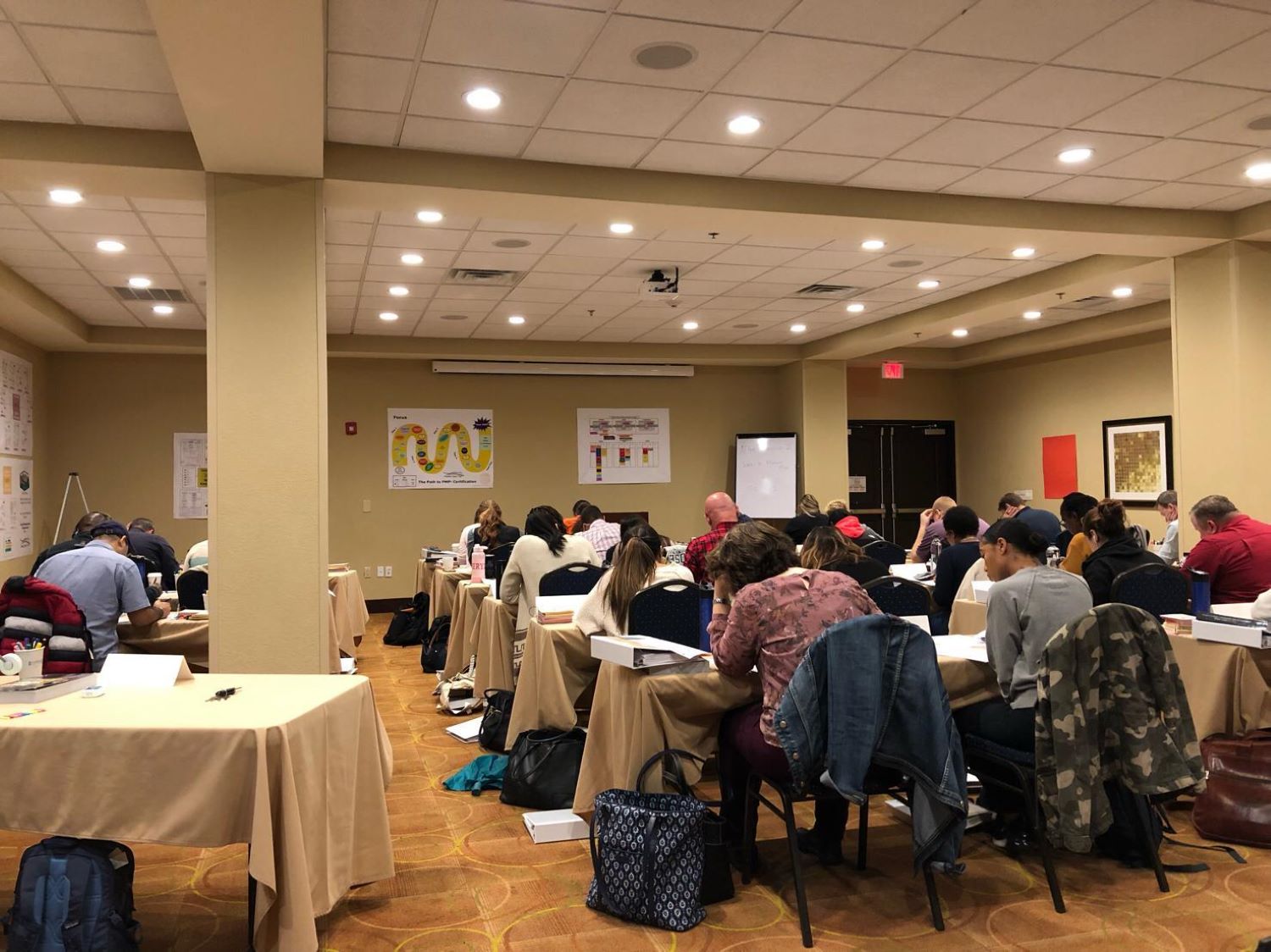
She shared: “I had to rewrite a bunch of specifications. So basically, we didn’t tell them how they could do their testing anymore, but we required that the electronics be built more robustly because electronics fail for mechanical reasons. They fail with connector problems. They fail because the vibrations, like you put a piece of electronics on a fighter plane, it’s getting shaken up a lot more than it is anywhere else.”
‘And I wrote papers on durability testing for electronics, which was a very different field than electronic reliability, which is all probabilistic in nature. My tests were all mechanical engineering in nature. We would heat up and cool down the electronics and stress test them. We put them on vibration shakers, and we find vibration instabilities between the cards and their holders and what was causing these components to break in planes.’ Michelle added.
Her process involved personally calling these companies, expressing her understanding of their involvement in a particular project, and highlighting her past success.
Notably, she shared her track record of winning her first contract right out the door, securing a substantial $40 million for the company. This not only showcased her capabilities but also demonstrated tangible results.
The essence of Michelle’s outreach was to offer her insights and expertise to companies currently engaged in the bidding process.
In Michelle’s own words, “I learned that you just can’t copy from one proposal to the next.”
Strategic Approach with a Scalable Backend Web System
Michelle LaBrosse also highlights the transformative impact of implementing a scalable backend web system on her company’s extraordinary success. Utilizing her expertise in website development, she applied her knowledge to establish a comprehensive backend course management system for Cheetah, strategically positioning the company for scalability and expansion.
“I knew how to do websites and I had created the whole backend course management system for cheetah. And so basically the company had all of the infrastructure in place to take off, to scale”
Having previously founded Wired for Success, Michelle seamlessly transferred the lessons and infrastructure developed in that venture to drive Cheetah’s growth. The integration of backend systems served as the cornerstone for Cheetah’s expansion.
The results of this strategic decision were evident in the company’s financial trajectory. Starting with $250,000 in revenue in 2001, Cheetah experienced a substantial surge to $2.5 million in 2002, further skyrocketing to an impressive $15 million annually by 2005. Michelle attributes this remarkable success directly to her adeptness in creating a scalable backend web system.
Cheetah’s adeptness in viral marketing, refined through Michelle’s experiences with Wired for Success, played a pivotal role in the company’s rise. Michelle implemented a bold strategy of offering valuable content for free, including a guide mirroring what others were selling. This not only showcased her expertise but also played a significant role in making people eligible, contributing substantially to Cheetah’s growth.
Key Takeaway – The Importance of Price Point
Michelle LaBrosse places significant emphasis on the strategic determination of the price point for products or services within a business context.
One of her key principles involves setting a price low enough: “You can’t make your product over that because other people can’t pay for it.”
According to Michelle, understanding and defining this price point is paramount, as it directly influences the product’s accessibility to a wider consumer base.

She firmly advocates for a business-to-consumer model, where affordability is a crucial factor in attracting a diverse customer demographic.
Michelle highlights the importance of ensuring that the product’s price remains within a range that is manageable for individual consumers. This strategy aligns with her approach to business, where a broader customer base is key to success.
In addition to catering to individual consumers, Michelle introduces the concept of a government rate as a strategic pricing option.
The General Services Administration (GSA), a U.S. government agency responsible for managing and supporting the basic functioning of federal agencies pricing model, in particular, is highlighted as a valuable tool, providing transparency and allowing customers to benefit from predetermined rates.
“That’s the number one thing I would do. Just work on getting on that GSA list. If you’re going to go to business consumer and the GSA pricing is really important to us.” Michelle stated.
This tactic becomes especially relevant for businesses operating in the government sector, facilitating smooth transactions and competitive negotiation with other companies seeking preferential terms.
Michelle’s decision to prioritize a business-to-business consumer approach is shaped by her understanding of potential risks.
She also draws from the experiences of other companies, emphasizing the vulnerability associated with depending heavily on a single major client.
She shared: “I have 80, 000 students from all over the place. And they’re the ones who refer business to us. You’ve got to make sure that your price point is something that an individual can spend.”

